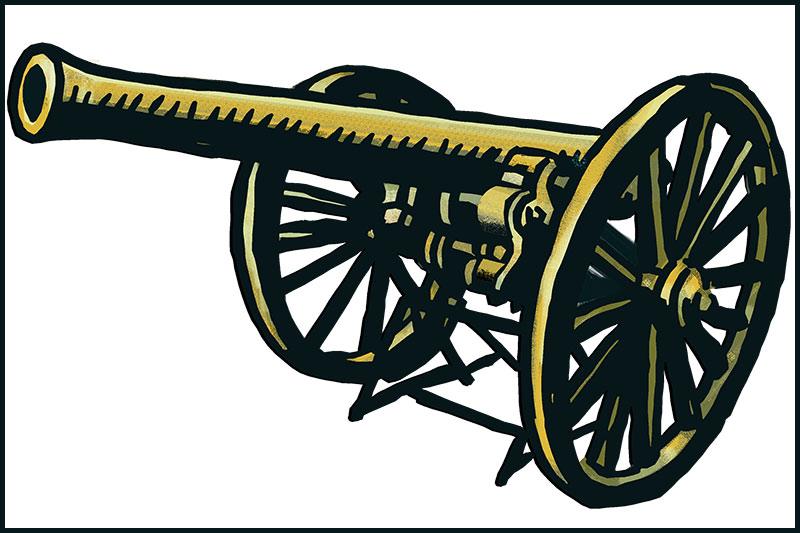Why all the cannons, New Orleans?
This is a cannon city.
Cannons to the left of us, cannons to the right of us, cannons in front of us, with apologies to Lord Tennyson’s “Charge of the Light Brigade” and an immediate disclaimer that left and right have nothing to do with politics.
At the Cabildo across from Jackson Square is a 3-ton, 10 ½-foot long Spanish cannon from the Battle of New Orleans in 1815 that may have been manned by Lafitte’s Baratarians, the rogue warriors of the pirates Jean and Pierre Lafitte. History tells us the Baratarians manned two 24-pound cannons and a 32-pounder during the battle with the British.
At the Chalmette Battlefield, where the Battle of New Orleans was fought on Jan. 8, each year there is a re-enactment with many working cannons fired to commemorate the occasion. Singer Johnny Horton’s famous song about the battle says: “We fired our cannon till the barrel melted down/ So we grabbed an alligator and we fought another round/ We filled his head with cannonballs ‘n’ powdered his behind/ And when we touched the powder off, the gator lost his mind.”
Across Jackson Square stands Washington Artillery Park at the Moonwalk, which features a Civil War cannon that pays tribute to the 141st Field Artillery of the Louisiana National Guard.
Head toward Esplanade Avenue on Decatur Street and you find the gilded statue of Joan of Arc, the Maid of Orleans, the hero who led the Siege of Orléans in France against British forces in the 1420s, where cannons were used extensively. Donated by France to New Orleans in 1972, at her statue are two cannons.
On Tulane’s campus in front of the Navy ROTC building at Freret Street and McAlister Drive is a naval cannon made in 1911, which has been there seemingly forever—at least since 1941, maybe earlier.
This column originally appeared in the March 2017 issue of Tulane magazine. Read the full article here.

